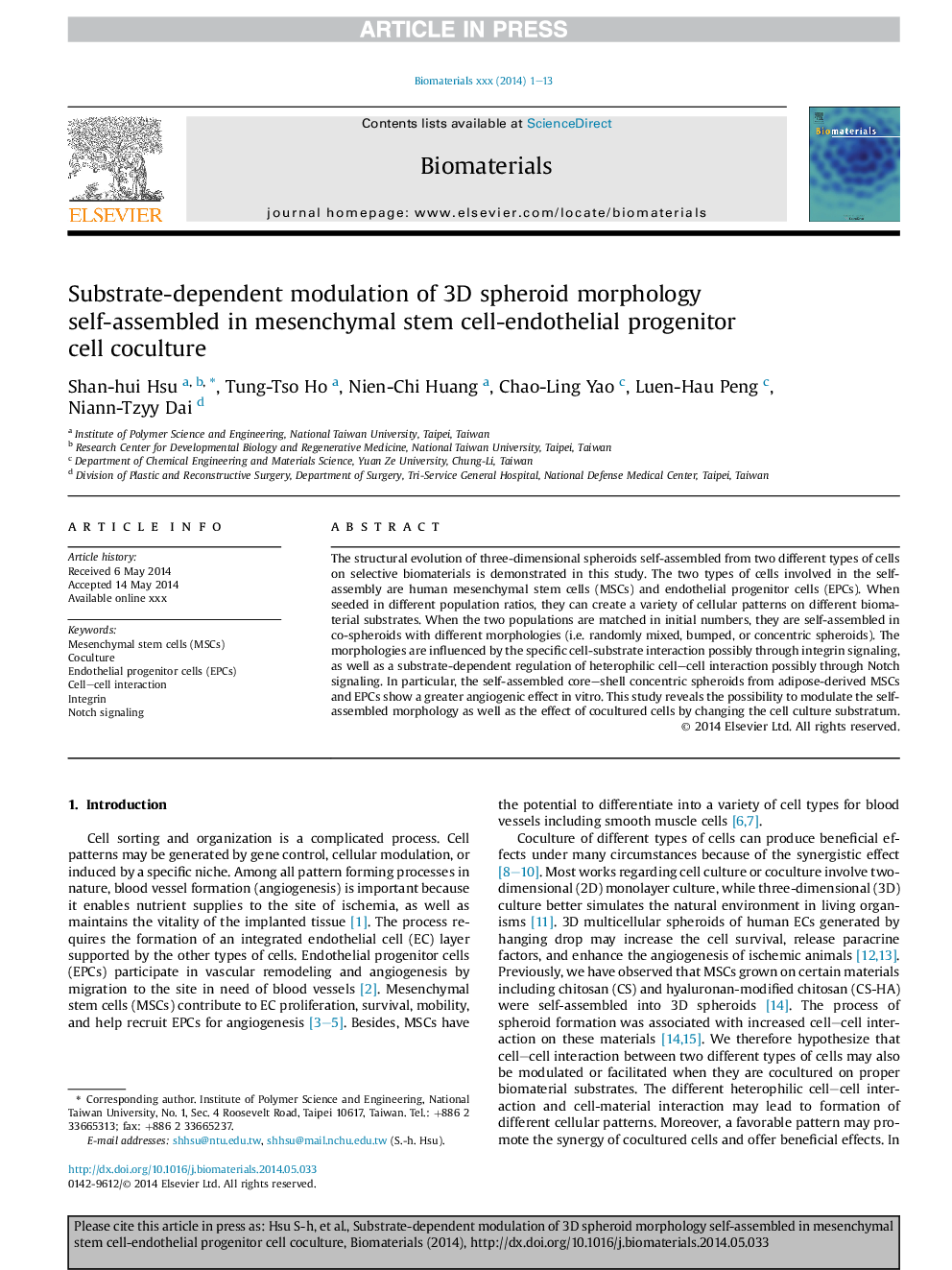| Article ID | Journal | Published Year | Pages | File Type |
|---|---|---|---|---|
| 10227198 | Biomaterials | 2014 | 13 Pages |
Abstract
The structural evolution of three-dimensional spheroids self-assembled from two different types of cells on selective biomaterials is demonstrated in this study. The two types of cells involved in the self-assembly are human mesenchymal stem cells (MSCs) and endothelial progenitor cells (EPCs). When seeded in different population ratios, they can create a variety of cellular patterns on different biomaterial substrates. When the two populations are matched in initial numbers, they are self-assembled in co-spheroids with different morphologies (i.e. randomly mixed, bumped, or concentric spheroids). The morphologies are influenced by the specific cell-substrate interaction possibly through integrin signaling, as well as a substrate-dependent regulation of heterophilic cell-cell interaction possibly through Notch signaling. In particular, the self-assembled core-shell concentric spheroids from adipose-derived MSCs and EPCs show a greater angiogenic effect in vitro. This study reveals the possibility to modulate the self-assembled morphology as well as the effect of cocultured cells by changing the cell culture substratum.
Keywords
Related Topics
Physical Sciences and Engineering
Chemical Engineering
Bioengineering
Authors
Shan-hui Hsu, Tung-Tso Ho, Nien-Chi Huang, Chao-Ling Yao, Luen-Hau Peng, Niann-Tzyy Dai,
